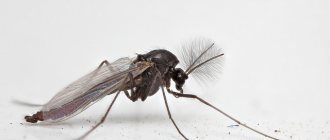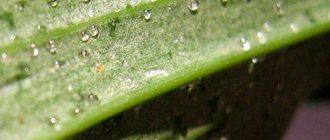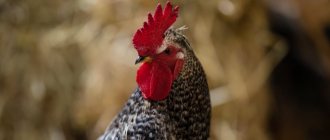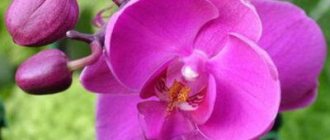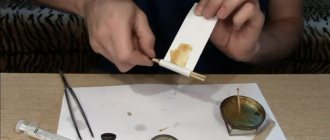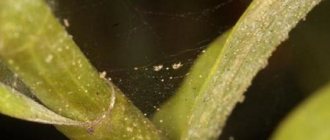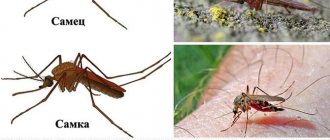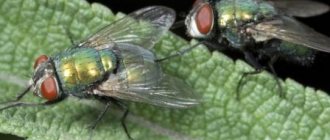Sticky leaves on the phalaenopsis orchid
If you do not find out the cause in time and do not take appropriate measures, you may even lose the plant.
What caused it and what needs to be done to prevent this from happening again?
External manifestations
Any unusual appearance on the leaves should concern the grower. This serves as a signal that something is wrong with the plant.
Stickiness usually comes in three forms :
cause such forms .
What are these drops and what do they look like: description and photo
It happens that drops appear on the leaves of phalaenopsis that look like dew, they feel sticky to the touch and taste sweet. They can be of different sizes and located in different parts of the flower. If you look closely at them, you can see the sugary structure.
Reference! This phenomenon has a scientific name - transpiration.
In the photo you can see what the drops look like on the leaves of the plant.
Causes
The appearance of a sticky substance can be due to several reasons.
And what is most interesting is that they are not interconnected with each other.
Sticky drops on orchid leaves can be caused by various reasons.
The natural process of sticky droplets appearing on leaves
Another name for this process is transpiration.
Moisture moves through the plant, evaporating through the external organs, which are the leaves.
Flower nectar is formed as a result of the formation of sugars inside the orchid.
The drops that appear are active participants in attracting insects - pollinators, which can simultaneously perform the functions of destroying various kinds of small pests or scaring them away from the plant.
A striking example is the appearance of ants , which are attracted by the secreted sweet nectar.
They, in turn, successfully destroy aphids.
Also, secretions can serve as a trap for insect pests and parasitic microorganisms, sticking them where they successfully die.
Or for some pests, the smell of orchid flower nectar is too sweet and repels them.
Excessive watering
Improperly organized watering or inadequate moisture can be expressed not only by the appearance of droplets, but also by the covering of the entire leaf with a sticky substance. Then it becomes sticky and wet.
The accumulated excess moisture in the pan or in the substrate oversaturates the plant, and it releases it by evaporation from the leaves.
Excess moisture affects the condition of the leaves.
And if you add low temperature and bright lighting to excessive watering, then there will be no doubt about the reason.
Excess of fertilizing
Overfeeding with phosphorus, potassium and nitrogen, coupled with mineral complexes, leads the flower to a hyperactive stage.
The plant's metabolism increases sharply and nectar is released in the form of a sticky coating on the leaf blades.
Excess sugars are .
The negative factor is that this leads to damage to the leaves and the appearance of spots on them.
It is necessary to completely replace the substrate , otherwise the death of the peduncles or rosette will occur.
Pests
Not in all cases, the appearance of sticky liquid is associated with a natural process or inappropriate care.
First of all, you should always take a close look (even through a magnifying glass) at the presence of foci with parasites.
Most often, phalaenopsis is affected by:
- Scale insects are one of the most dangerous pests of orchids, characterized by very rapid reproduction. It forms a kind of ball above itself - a dome of wax, which is easily confused with droplets due to its sticky consistency;
- Scale insects - pest behavior is characterized by sucking juice from plant tissues, while simultaneously injecting poison there. Upon visual inspection they look like small white lumps. And the waxy coating can easily be confused with flower sticky nectar;
- Spider mites are a ubiquitous pest with a barely noticeable web. It forms a white coating on the leaves, which condenses moisture and creates a sticky substance.
Aphids are also a frequent guest . If harmful parasites are detected, you should immediately begin to destroy them and treat the flower.
Orchid diseases and their treatment with photos
Powdery mildew
Multiple appearances of sticky drops, which later turn into a white coating, are a sign of phalaenopsis being affected by a fungal disease - powdery mildew.
The white spots then darken and the damaged areas dry out.
The causes of this disease are mainly too high humidity and temperature in the growing areas.
What are the reasons for the appearance
To determine the reason for the appearance of sticky drops on the leaves of an orchid, you need to analyze the care of the flower (especially watering), and also carefully examine the rosette and each leaf blade. At the same time, such a plant must be isolated from other representatives of the apartment flora in order to avoid damage to other flowers by parasites or pathogenic microflora, which can give rise to such a phenomenon.
More often, the appearance of sticky drops is provoked by the following reasons:
- transpiration. This is a natural process that involves the formation of flower nectar due to the overproduction of sugars inside the flower. In nature, such droplets serve as bait for pollinators or pests;
- periodic violation of the water regime (overflow);
- low room temperature;
- very bright lighting of plants in the warm season;
- excessive application of fertilizers. Sticky plaque appears especially often with a combination of abundant watering and frequent fertilizing;
- damage by parasites: scale insects, mites and aphids. Pests are quite clearly visible when examining the leaves;
- defeat of an orchid by powdery mildew. In this case, in addition to sticky drops, black or gray spots appear on the leaves.
As you can see, the main reason for the formation of a sticky coating is improper care or the creation of unfavorable conditions for the flower.
Diagnostics
The success of treatment depends on the correct diagnosis of the phenomenon, therefore, before starting measures to restore the health of the flower, it is necessary to conduct a thorough visual inspection:
- If on the leaves of phalaenopsis, in addition to the sticky layer, there is also a white coating or black spots, this is a sign of powdery mildew.
- Yellow spots on the leaves indicate an excess of mineral fertilizers.
- It is also necessary to inspect the reverse side of the sheet. If the reason for the appearance of sugar drops lies in insect pests, that’s where you need to look for them.
How to solve a problem
If sticky drops appear, you need to take certain steps to remove them. To do this, you must first determine what exactly caused the formation of such formations. Your further actions depend on the root cause.
If the orchid experiences discomfort due to improper care or maintenance conditions, then it should be moved to a more suitable room and watering and fertilizing should be coordinated. If the reason lies in parasites and pathogenic microflora, then the flower must be immediately sprayed with special means. Otherwise, the orchid may die. To destroy all pests, the flower should be moved to a hot place. Thanks to this, the bugs will get out. After this, the leaves need to be wiped well to completely remove the sticky coating. Then the plant is sprayed with preparations specially designed to combat a specific type of parasite or pathogenic microflora. For maximum effect, the orchid should be transplanted into a new disinfected pot and replace the substrate.
Folk remedies can be used against powdery mildew. Problem areas can be treated with an oil solution. It is prepared as follows: dilute 2 tbsp in 1 liter of water. l. olive oil. After this, the prepared solution is applied to the plant using a spray bottle.
You can also treat the flower with a product made from 1 liter of water, 10 ml of denatured alcohol and 15 g of liquid soap. However, this method is not suitable for thin-leaved varieties.
Prevention measures
We found out above that the main reason for the appearance of sticky plaque is improper care of the orchid. Therefore, to prevent this phenomenon, it is necessary to strictly adhere to the instructions for caring for this or that variety.
It is important to choose the right temperature and humidity level for the plant. If the optimal level of these indicators is violated, the risk of diseases and pests increases significantly.
It is also necessary to remember about proper watering. If the substrate is excessively moistened, the root system will be the first to suffer. Following her, the leaves and buds will show their “dissatisfaction”.
Reasons for appearance
There are various reasons why sticky droplets form on orchids.
- pest activity;
- improper care;
- diseases.
Pest activity
You can often see sticky drops on orchids due to the appearance of mites and aphids on them. Most often in this case, you can find small dots on plants on the outside and back of the leaves, on the trunk, on the flower shoot (these are small insects that have fallen into the liquid). In this case, the greatest amount of plaque appears in the leaf area.
Improper care
Sweet bloom can appear on flowers due to the use of too much fertilizer. If you adjust the feeding in a timely manner, the drops can gradually disappear on their own.
If there is an excessive amount of fertilizer, the flower should be replanted immediately, regardless of whether it is currently blooming or not. If this is not done in a timely manner, the orchid may die.
Particular care must be taken when handling fertilizers containing phosphorus, nitrogen and potassium. After all, they, together with mineral fertilizers, can significantly increase the plant’s metabolism, which will lead to the formation of a layer of mucus on it.
Excessive watering of orchids can also be harmful. Therefore, you need to carefully monitor the amount of water for such flowers. Sometimes sticky patches may appear due to the natural process of flower nectar formation. In this case, the liquid will not cause any harm to the plants.
To determine the soil moisture level, you need to inspect the soil. If it begins to clump or lose its aeration properties, then the plant must be replanted immediately. The same is done if white mold forms or if there is an unpleasant odor.
It is also necessary to monitor the temperature and lighting in the room where the orchids are located. They require good lighting, but they should not be placed in direct sunlight. Often a hygrometer is placed next to the plant. This device is designed to control temperature changes in a room.
Diseases
Orchids can often develop powdery mildew, which is a common fungal disease. It occurs due to small spores that are easily transported through the air.
With this disease, in addition to copious sticky fluid, large white dots may also form. Along with them, a gray coating may appear on the leaf blades.
Preventive measures
To ensure protection against possible diseases, optimal conditions for keeping the orchid should be created. Prevention against infections:
- The substrate for planting orchids must be checked for the presence of insects and disinfected.
- In winter, it is necessary to maintain the temperature at +16...+18 °C, in summer +22...+25 °C.
- The humidity level should not exceed 60-70%.
- The room in which the plant is located must be constantly ventilated.
- The flower is watered 1-2 times every 10 days, the leaves are sprayed with water daily. The number of waterings is determined depending on the humidity of the substrate. Use separated water. Water should not be allowed to stagnate in the axils of the peduncles.
- During the flowering period, the orchid needs iron and potassium. It is fed 2 times every 30 days with fertilizer containing these minerals.
- Instead of fertilizers, you can use homemade vitamin cocktails. Thanks to them, the plant will begin to develop more actively and harmoniously. A cocktail containing B vitamins, glucose and succinic acid will make it easier to endure various diseases, unscheduled transplants and other difficulties.
If you constantly maintain the temperature at the desired level, avoiding sudden changes and drafts, and check the plant for pests, the flower will not need complex treatment. It is considered normal when sticky drops appear on the plant after each watering.
Treatment options
Currently, there are a large number of ways to cure orchids and rid them of sticky plaque secretions.
- First, it is recommended to pay attention to watering . In winter, it should be significantly reduced. Indeed, due to the increased level of humidity, the infection will only develop.
- If plants are covered with small insects, they must be removed. This can be done manually, after which it is recommended to water the flowers with warm water. If an orchid is affected by a scale insect, it must also be treated with a solution of a special preparation containing oil.
- The sweet nectar that appears on the leaves and trunk is the waste product of the mealybug. At the same time, on the plates you can see the harmful insects themselves that got into the liquid.
- Plants are often affected by scale insects. This insect can be easily identified by its almost transparent semicircular shell. These parasites secrete a waxy substance that accumulates around them and over time forms a protective film.
- If the flowers are affected by mites, then you should first remove all damaged parts of the infected plant. After this, it must be replanted, and the pot in which it was located must be thoroughly rinsed with clean water.
Prevention
To prevent the appearance of sticky liquid on the orchid, it is recommended to periodically carry out a number of preventive measures. So, you should use special granules of special polymers, which can be found in almost any flower shop.
In addition, today there are various vitamin cocktails for damaged flowers. They can even be prepared at home. Most often they are made with succinic acid, drops of zircon, and glucose.
It is also necessary to monitor the amount of water for orchids. After all, excessive watering can lead to the appearance of fungus and bacteria. We must not forget that such flowers require good lighting. Otherwise, powdery mildew may appear.
It is also necessary to carry out regular inspections of orchids. When the first liquid drops are detected, treatment should be started immediately. Also, the affected flower must be isolated from other healthy plants. As a preventative measure, you can use the drugs “Actellik” and “Aktara”. In appropriate dosages, they help increase the immunity of such indoor flowers.
Step-by-step instructions: what to do if the color has changed?
To green
The outer shell of the root, velamen, turns green when moistened, and when it dries it takes on a silver-gray tint. The green color of the root system indicates the health of the orchid. It is easy to determine the stage of growth by the color of the roots - young roots have a light green color, while the old root system has a more faded, inexpressive shade.
Attention! The appearance of light green roots should be monitored. If they are not visible for several months in a row, it is necessary to reconsider the irrigation system
Popular articles Philodendron climbing: growing at home
To white
This color change is associated with the use of tap, untreated water for irrigation. Hard water contains a large percentage of salts, which tend to accumulate in the soil, thereby changing its composition and blocking the flow of air to the roots. As a result, you can see a white coating on the surface of the substrate and rhizome.
Measures taken:
carefully remove the flower from the pot and remove the remaining soil; rinse the roots under running warm water; trim damaged areas of roots; transplant into an orchid in a new substrate; use exclusively purified, soft water for irrigation; update the soil every three years, at least.
Experienced gardeners advise collecting melt or rainwater and using it to moisten the plant.
Reference! To make the water softer, add a few drops of freshly squeezed lemon juice.
To brown
It is important to regularly inspect the root system of epiphytes. If the flower is planted in a transparent pot, this is easy to do
It is more difficult if the orchid grows in a ceramic or clay pot, with limited access to light. In this case, the color of the roots may change.
Let's look at what's wrong if the roots of your home orchid turn brown. A similar color on the root shoots may appear due to deep planting in the substrate. Roots, with a lack of natural light, cannot fully participate in the process of photosynthesis, and as a result, chlorophyll, which is responsible for the green color, is not produced.
Measures taken:
take the flower out of the old pot; immerse the lower part of the plant in a container with warm water, leave for 2 hours; carefully wipe the roots with a paper towel; if there are damaged areas, remove them; transplants the orchid into a plastic transparent pot; place it in a well-lit place.
Another reason why roots turn brown is rot. It develops in an environment with high humidity, that is, with frequent or abundant watering (what to do when a flower is flooded?). The main rot diseases are gray, brown and root rot. With such infectious diseases, the following are often found: brown spots on the roots, flowers, brown spots on the leaves (read about what to do if spots on the petals and leaves appear on the orchid).
Measures taken:
- quarantine the diseased plant;
- remove damaged areas of roots with a sharp, disinfected instrument;
- treat the soil and plant with a 0.2% solution of Fundazol or Topsina; another systemic fungicide will do;
- it is advisable to use the method of immersing the pot in a chemical mixture, if it is described in the recommendations for the use of the drug;
- repeat the procedure 3 times with a break of 10-14 days;
- normalize indoor microclimate parameters;
- adjust the irrigation system.
We offer you a visual video about how to save an orchid with darkening roots:
